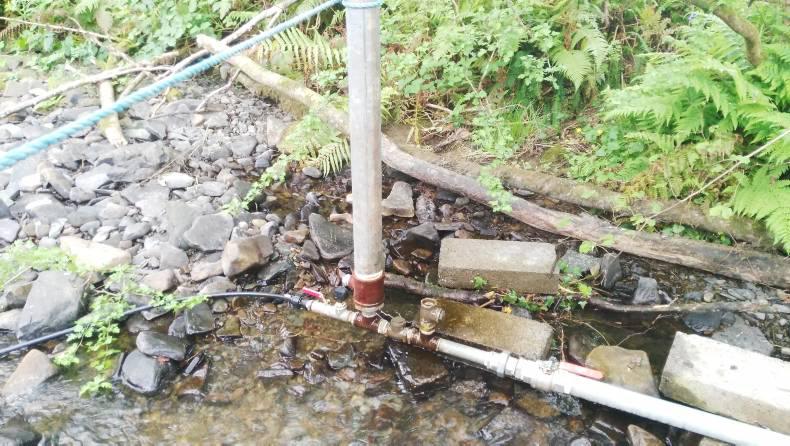Last week, the Irish Farmers Journal visited Tom Brennan’s farm in Paulstown, Co Kilkenny. Tom is a part-time drystock farmer. He buys in continental heifers every year and puts them in calf before selling them on again privately. This year, he joined Glas and, as part of the scheme, he was required to fence off the boundary river. Fencing the river caused problems for Tom because there was no pumped water system on the farm and, prior to Glas, he had water points where the heifers could go to drink in the river.
Mains electricity was over a mile away, so that was also ruled out as an option for powering a pump in the river or sinking a new well.
Tom felt that bringing electricity over to the fields would be just too expensive because it would run into thousands of euro, so he had to look at alternative methods of getting water to his heifers.
He started googling methods of pumping water from a river without the use of electricity or fuel and came across some videos on YouTube of ram pumps working in foreign countries that did just that. The ram pump uses a combination of water flow and air pressure to pump water from a river. He could not find any that were made in Ireland, so he called Derek Cummins, who offers electrical and mechanical services, to help him design a similar system that would work in his river.
According to Derek, he had to adjust the system to suit Irish conditions – the fall in the rivers here is usually a lot less than elsewhere.
After several attempts and adjustments, Derek designed and made a system that pumps water from the river to a reservoir tank on top of the river bank. From the tank, gravity fills two water troughs in the fields. The series of photos and Figure 1 helps to explain how the system works.
There is also a video online that shows the system in action on Paul’s farm. Similar systems were used as far back as the 1800s – perhaps they might make a comeback.
Derek is available to install this system for more farmers and he is constantly improving it as he goes.
Picture one

Derek used 4in diameter plastic pipe and the opening was set in a rock pool in the river.
The river on Tom’s farm had a fall of 4ft from the pipe opening to the pump location.
There is a cone-shaped filter trap at the mouth of this pipe to prevent leaves or other debris going inside. The 4in pipe acts as a reservoir of water, which makes sure there is a constant supply of water to the system further down.
Picture two

This plastic pipe takes water downhill for 24m down to a smaller 2in diameter galvanised gun barrel pipe. Once the water moves from the large-diameter plastic pipe to the smaller-diameter gun barrel pipe, the velocity increases significantly. Derek has manufactured a fitting to join the 4in pipe to the 2in pipe since he made Tom’s system.
Picture three

The water continues down the 2in pipe and into a check valve. The systems works via hammer effect. The water hammer pushes a quick surge of water through the check valve, the water gets trapped after the non-return valve, so it cannot escape back. The cycle repeats constantly hammering the water through the check valve.
When the first valve closes, the second one opens. This fills the pressure vessel with water (approximately 50%). As the pressure increases between water and air, water is pushed out the discharge pipe and up the hill. No electricity is used to pump the water.
Picture four

The water fills a 1,100-litre (IBC) reservoir tank at the top of the bank. The system pumps one litre in 37 seconds. This reservoir tank fills two 500-litre water troughs via gravity – one trough is 250m away. Once the tank is full, the overflow goes back into the river.
Tom says the system is ideal for his 40 maiden heifers and, if his land was not as hilly, he thinks he could add more troughs.
For Derek’s river pump (DRP) system, you would need at least one length of 4in pipe (20ft length) and the farmer usually supplies this. Two lengths of gun barrel are required (6m/length), which Derek supplies because he says it has to be the correct type to work properly.
For a 1.25in pump and gun barrel, it costs €850 excluding VAT. Derek says labour costs varies, depending on the type of site and distance travelled to the site but he says, on average, he would have to charge €600 excluding VAT for the two days’ work to install the system.
He believes that it is a job for life and the cost is justified. He also charges €250 excluding VAT to call out and use a special test kit to check if the river is suitable for the system outside of the Carlow region. He says any river with a fall over 2ft should be suitable, while more adjustments have to be made in the case of a fall under 1ft.











SHARING OPTIONS